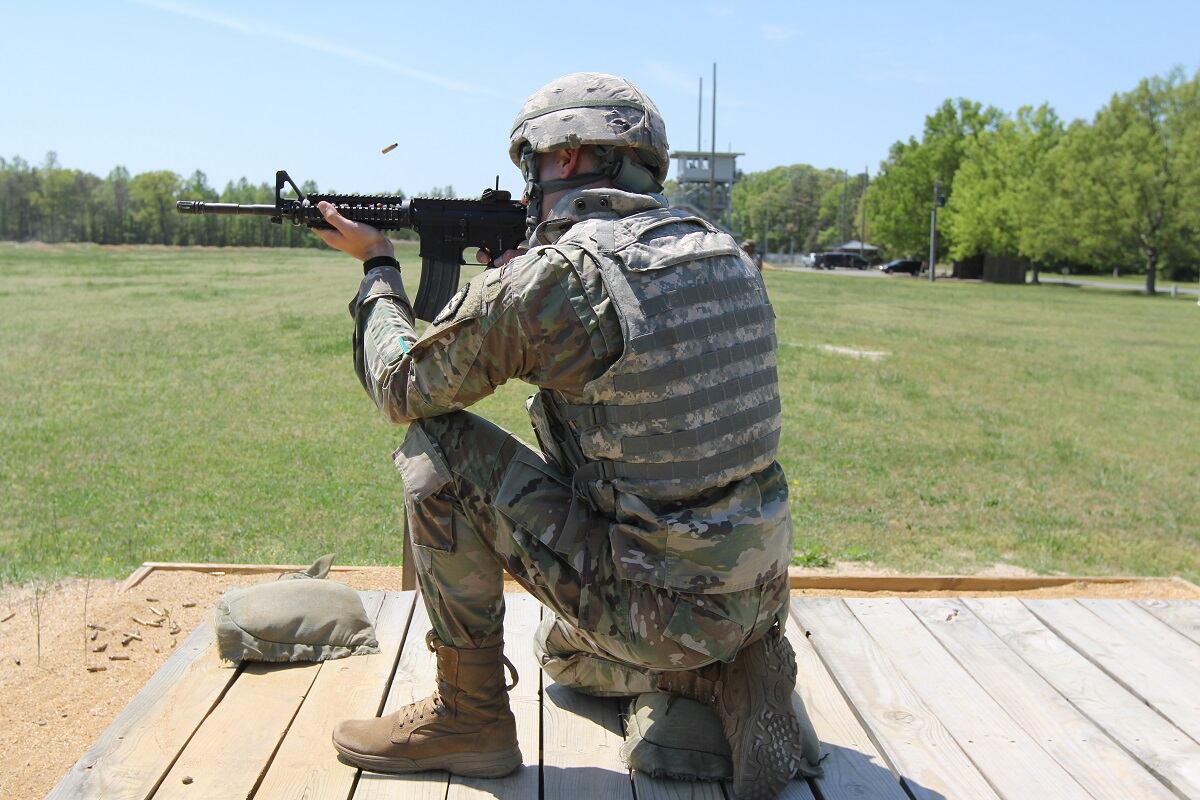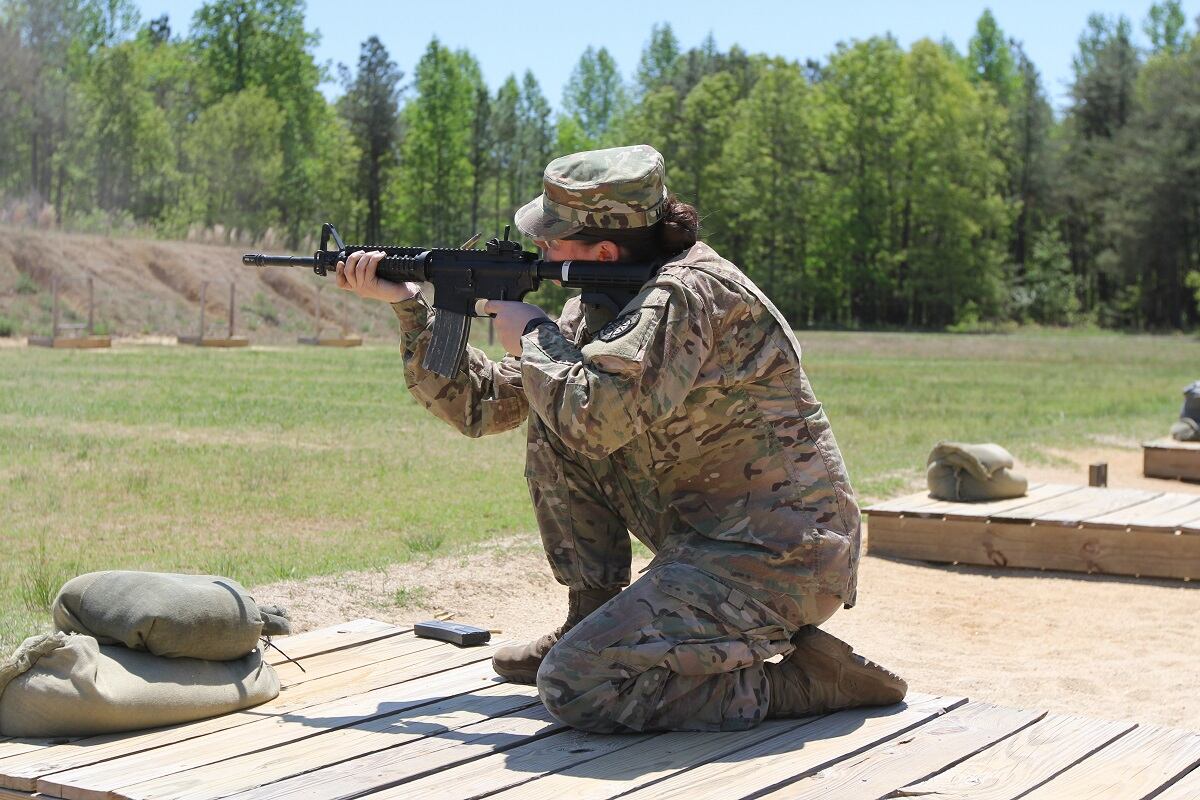The Army is investigating after an unintentional firing of an M4A1 carbine while its selector switch was moved between “semi” and “auto.”
The problem has affected at least 881 carbines, and it requires adding a function check on all converted M4A1s and modifying shooter immediate action drills.
The U.S. Army Tank-automotive and Armaments Command sent out its first safety message on March 26, noting the selector switch firing.
“The M4A1 was charged and the weapon’s selector was positioned between ‘semi’ and ‘auto.’ When the weapon’s trigger was pulled, the weapon did not fire. When the selector was then moved into either ’semi’ or ’auto,’ the weapon fired without a trigger pull.”
The malfunction was found on three weapons during on-site testing at Fort Knox, Kentucky.
Then, a second message, sent out on April 16, noted that the malfunction issue “is now believed to go beyond just the M4A1 PIP [product improvement program] weapons.
The new order expanded weapons testing to M16 series rifles.
The second message also noted that 881 M4A1 carbines exhibited the unintended discharge problem.
The Marine Corps issued its own safety message on May 24, ordering armorers to perform additional function checks during pre-fire inspections on the M4A1, M4 and M16A4 rifles prior to live-fire events, according to Marine Corps Systems Command officials.
There were no fatalities nor injuries reported with that or subsequent malfunctions when the carbines were tested, according to the messages. The probability of a fatality was listed as “remote” due, in part, to the fact that the weapon would have to be off “safe” to fire.
The M4A1s in question had been converted from the M4 carbine product improvement program. The Army has converted 259,000 M4s to M4A1s in the past three years.

Officials are analyzing a sample of the malfunctioning weapons along with simulation and modeling of components of the M4A1.
The M4A1 upgrade began three years ago and included a heavier barrel, ambidextrous safety controls and a conversion from the three-round burst firing mode to fully automatic.
At that time, Lt. Col. Terry Russell, then-project manager for Individual Weapons at Picatinny Arsenal, told Army Times that reports of M4 failures during battle, specifically in the intense fighting in the Korengal Valley in Afghanistan helped push to make the M4A1 standard issue.
One failure included barrels warping during heavy firefights.

The Army is also developing the Next Generation Squad Automatic Rifle to replace the Squad Automatic Rifle within the formation. That program aims to change the projectile and fire controls, and potentially alter the design, ammunition casing and other key features of the weapon.
Developments in the NGSAR program will be used to build a new carbine, which will ultimately replace the M4/M16 platform entirely.
The following function test is required to be performed on all M16 and M4 series rifles and carbines within 10 days or prior to live fire, whichever comes first, according to the message.
1. Ensure weapon is clear by observing the chamber, the bolt face, and magazine well. The weapon should always be pointed in a safe direction.
2. Charge the weapon, place selector lever on the safe position and pull trigger. The hammer should not drop.
3. Move the selector lever to the semi position, then move the selector to a position between semi and auto, and squeeze the trigger. The hammer should drop when the trigger is squeezed. If the hammer does not drop when the trigger is squeezed, this is a failure. Record this information and continue to the next step.
4. If the hammer does not drop, move the selector in either direction. If the hammer drops without squeezing the trigger, this is a failure. Record this information.
5. Gather information recorded from failures at steps (3) and (4) and segregate the weapon for further investigation. Contact TACOM with the weapon serial number.
6. If the weapon passes steps (3) and (4), the function check is complete.
The additional functions check is to inform Army officials of the extent of this issue and determine the number of weapons affected, the messages state.

The Army also issued an adjusted Immediate Action Drill. The steps are as follows:
1. Confirm that the selector is set to semi, auto or burst.
2. Slap upward on the magazine to make sure it is properly seated.
3. Pull the charging handle completely to the rear and hold.
4. Observe for ejection of case or cartridge, and ensure the cartridge or case is ejected and the chamber is clear.
5. Release the charging handle to feed a new round.
6. Tap the forward assist to ensure the bolt is closed.
7. Squeeze the trigger; the weapon should fire.
Todd South has written about crime, courts, government and the military for multiple publications since 2004 and was named a 2014 Pulitzer finalist for a co-written project on witness intimidation. Todd is a Marine veteran of the Iraq War.





